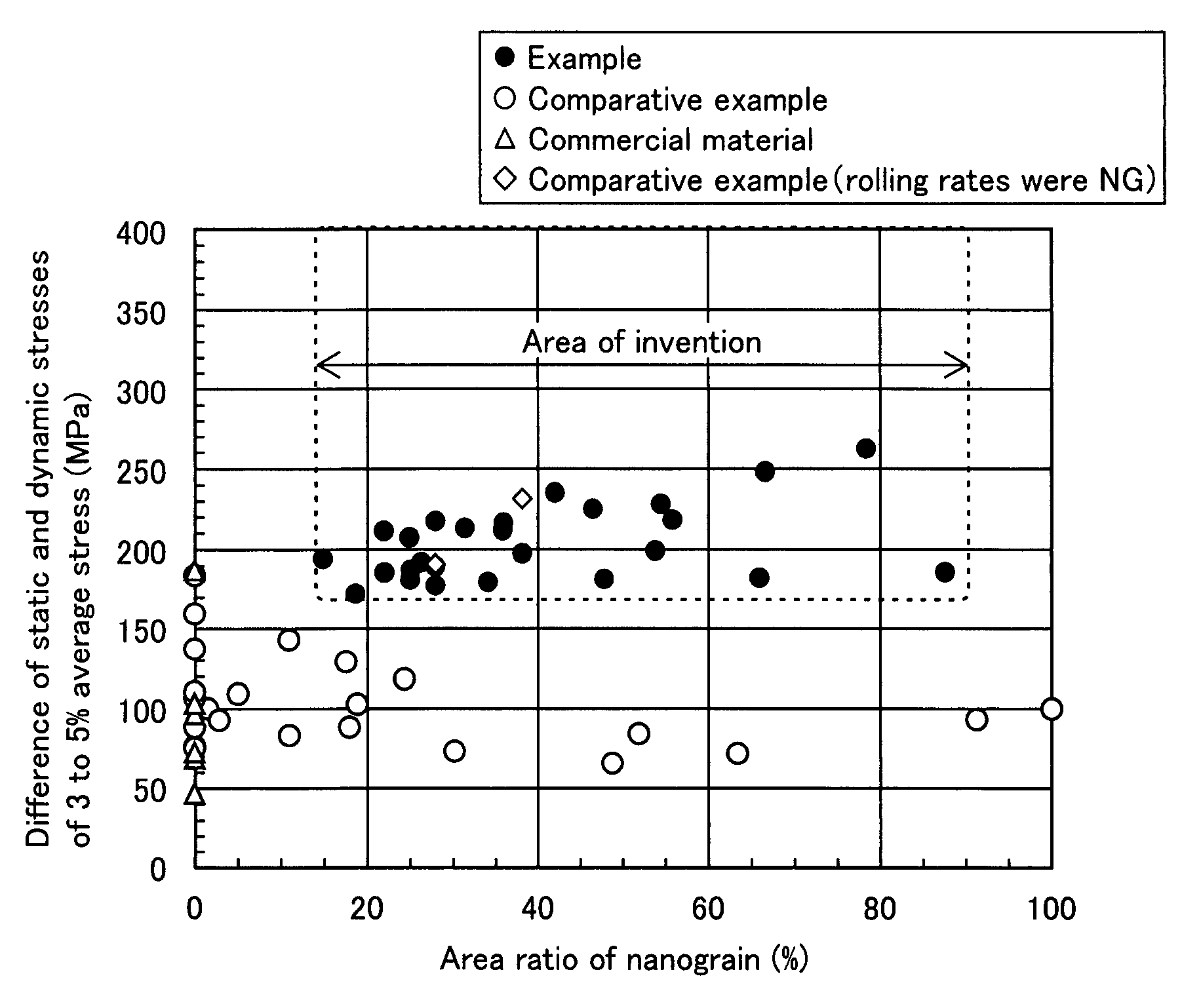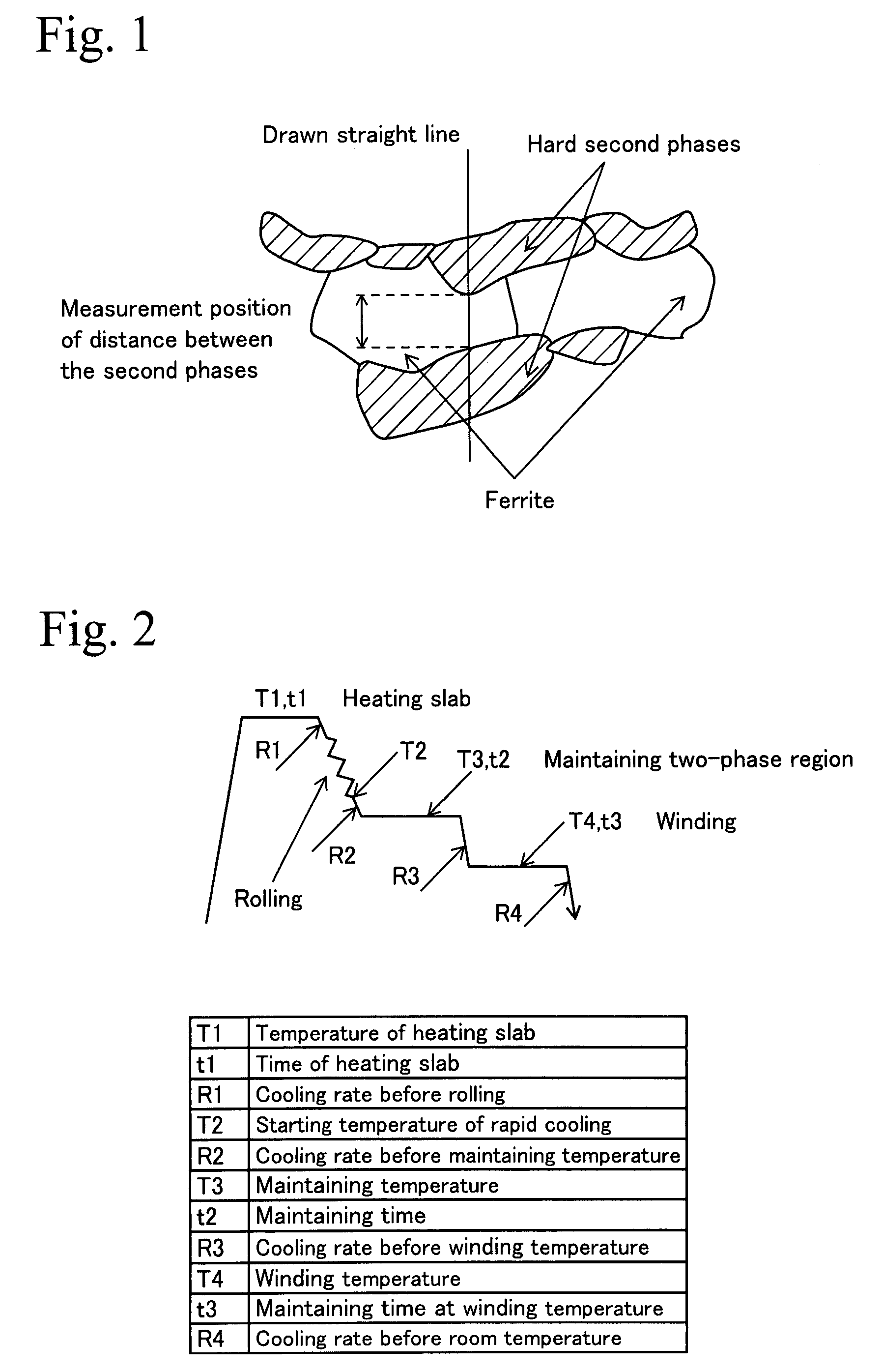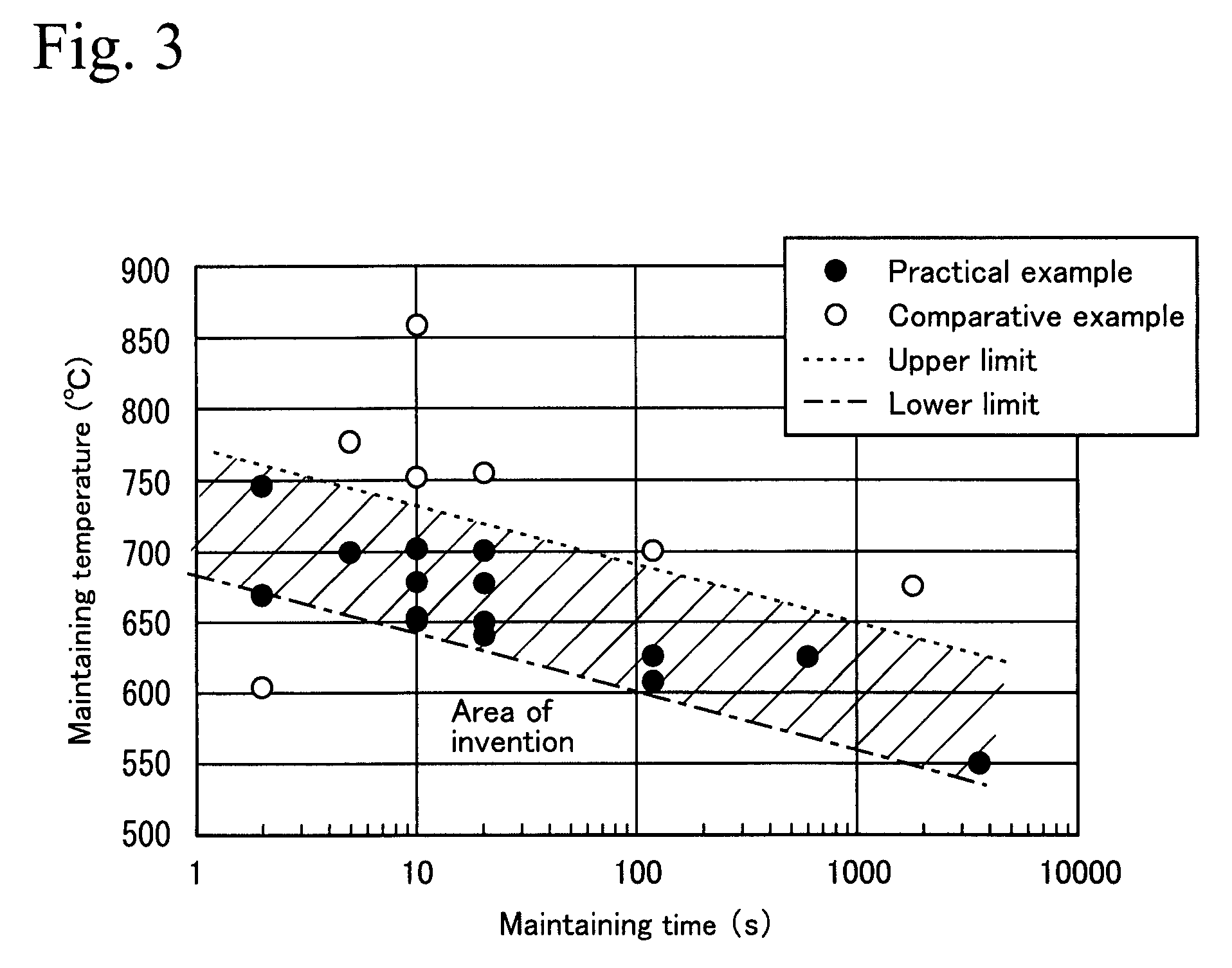High strength steel sheet and method for production thereof
a high-strength steel and steel sheet technology, applied in the field of high-strength steel sheets, can solve the problems of difficult press forming, lower static and dynamic stress difference, and decreased workability, so as to reduce the effect of nanograins and improve strength
- Summary
- Abstract
- Description
- Claims
- Application Information
AI Technical Summary
Benefits of technology
Problems solved by technology
Method used
Image
Examples
first embodiment
[0155]Slabs (slabs 1 to 19 according to the present invention and comparative slabs 1 to 11), of the chemical compositions are shown in Table 3, were ingoted.
[0156]
TABLE 3chemicalcompositioncompositionsC %Si %Mn %P %S %Al %Nb %Ti %Cr %Mo %Ni %B %invented slab 10.0230.321.240.0110.0070.0240.0120.0020.450.0010.010.0003invented slab 20.0800.421.840.0350.0040.0890.0020.0140.040.0010.010.0002invented slab 30.0500.491.220.0970.0050.0510.0220.0010.030.1900.020.0001invented slab 40.0990.012.010.0010.0020.0210.0230.0020.010.0010.010.0001invented slab 50.0980.011.530.0010.0020.0280.0020.0010.010.0010.020.0001invented slab 60.0990.012.000.0010.0020.0230.0880.0940.010.0010.020.0012invented slab 70.0980.012.000.0010.0020.0240.0020.0680.020.0010.020.0028invented slab 80.1020.170.800.0120.0050.0280.0010.0010.010.0010.010.0000invented slab 90.1300.010.370.0140.0070.0510.0010.0020.010.0010.010.0000invented slab 100.1610.010.560.0120.0070.0080.0020.0020.020.0020.020.0000invented slab 110.1700.441.320...
PUM
| Property | Measurement | Unit |
|---|---|---|
| grain size | aaaaa | aaaaa |
| thickness | aaaaa | aaaaa |
| grain size | aaaaa | aaaaa |
Abstract
Description
Claims
Application Information
 Login to View More
Login to View More - R&D
- Intellectual Property
- Life Sciences
- Materials
- Tech Scout
- Unparalleled Data Quality
- Higher Quality Content
- 60% Fewer Hallucinations
Browse by: Latest US Patents, China's latest patents, Technical Efficacy Thesaurus, Application Domain, Technology Topic, Popular Technical Reports.
© 2025 PatSnap. All rights reserved.Legal|Privacy policy|Modern Slavery Act Transparency Statement|Sitemap|About US| Contact US: help@patsnap.com



